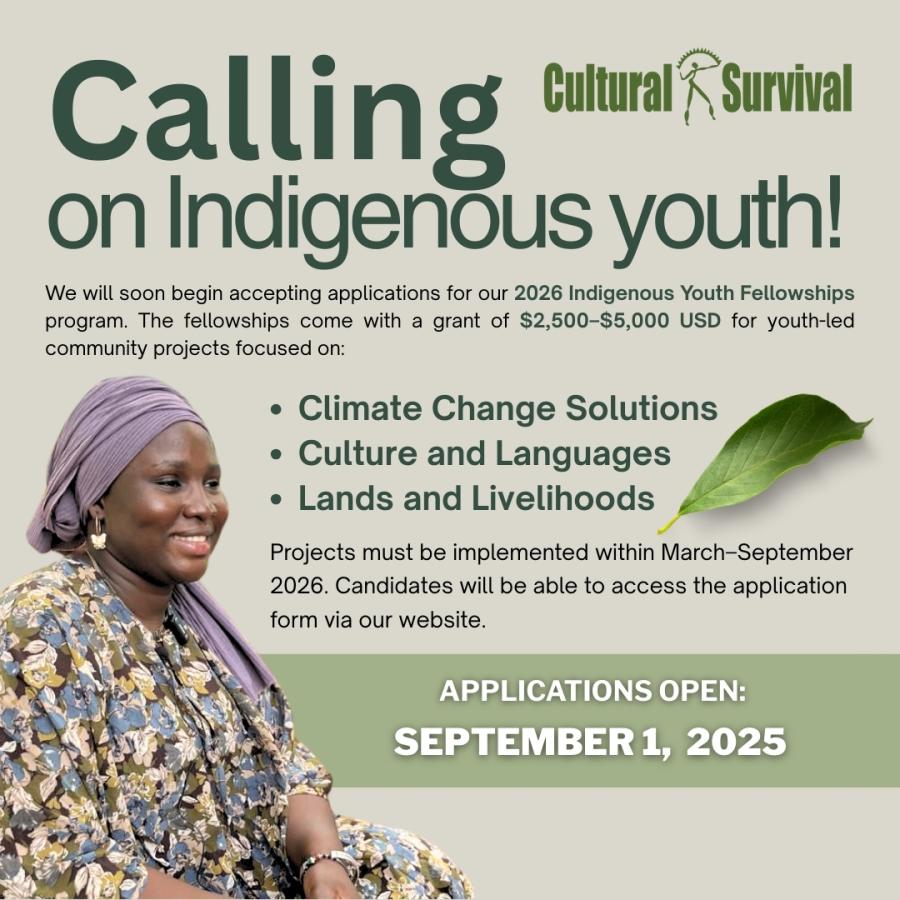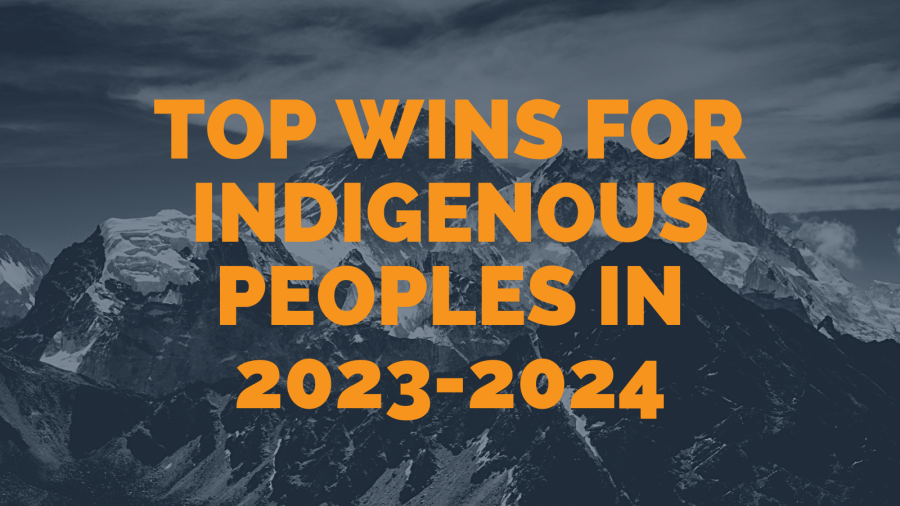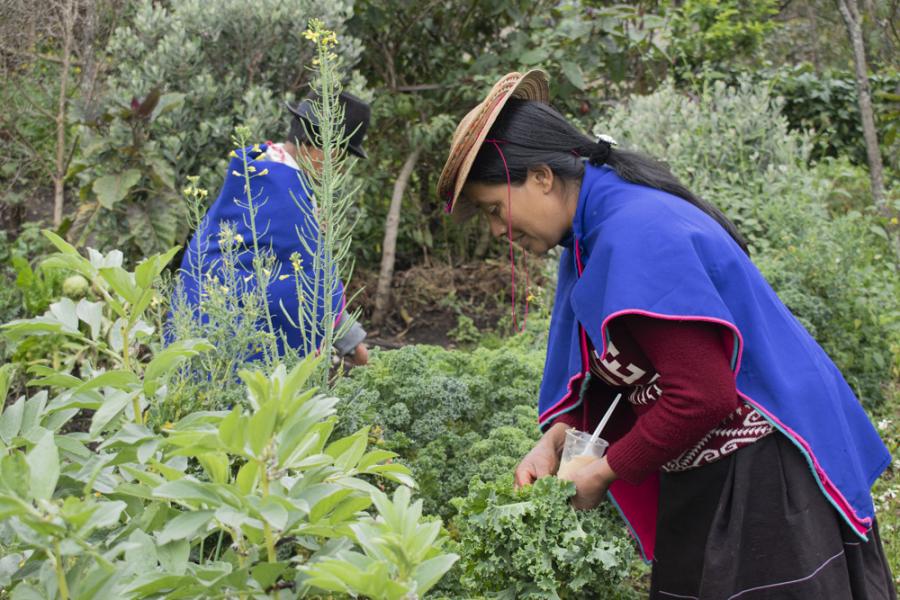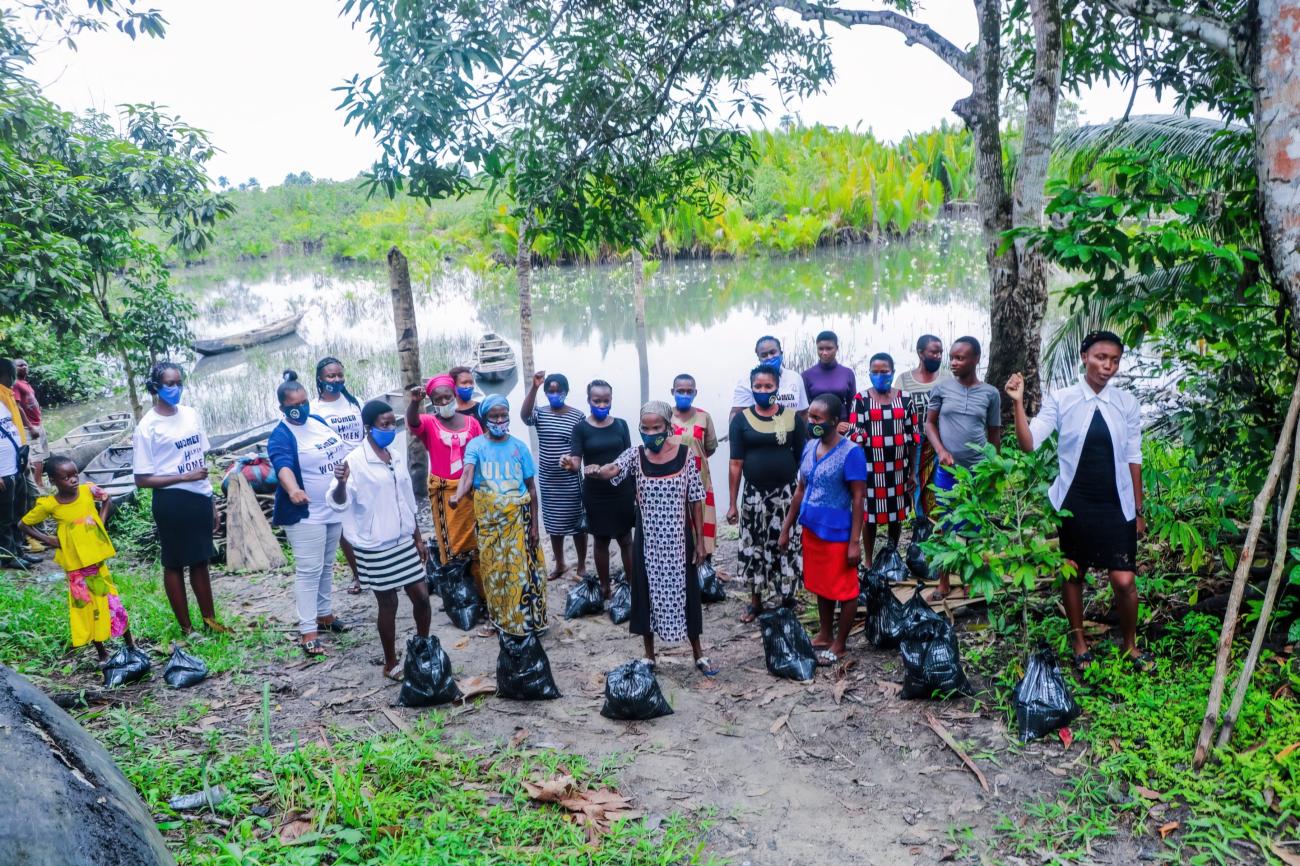
By CS STAFF (with contributions from Jess Cherofsky and Mariana Navarrete)
On February 27, 2022, the Intergovernmental Panel on Climate Change (IPCC) released the second installment of its Sixth Assessment Report on Climate Change. The 3,675-page report comprehensively analyzes the global climate emergency in the context of different regions, ecosystem types, and thematic areas such as livelihoods, health, and infrastructure. It mentions Indigenous Peoples 2,057 times.
The IPCC report recognizes climate change’s disproportionate impacts on Indigenous Peoples, including violations of Indigenous Peoples’ rights to ancestral lands, health, subsistence, and other rights. It also recognizes Indigenous Peoples’ role in climate change adaptation, which addresses effects already underway, and mitigation, which targets climate change’s causes. The IPCC’s press release acknowledges, “There is increasing evidence of adaptation that has caused unintended consequences, for example, destroying nature, putting peoples’ lives at risk, or increasing greenhouse gas emissions. This can be avoided by involving everyone in planning, attention to equity and justice, and drawing on Indigenous and local knowledge.” It recognizes three specific forms of climate justice: distributive justice, which relates to how benefits and negative impacts are distributed; procedural justice, which relates to access to participate in decision-making; and recognition, which relates to respecting and incorporating “diverse cultures and perspectives.”
It also states, “Healthy ecosystems are more resilient to climate change and provide life-critical services such as food and clean water.” Indigenous Peoples worldwide have always known this and are fighting to protect and revitalize ecosystem health, whether in dense rainforests, thriving waters, complex grasslands, or other systems. Indigenous worldviews, while as diverse as Indigenous Peoples, recognize that ecosystems and people are mutually dependent, each with reciprocal responsibilities to the other.
Respect Indigenous Rights to Free, Prior and Informed Consent
Indigenous Peoples’ struggles against development projects are part of climate change mitigation work, which they undertake in alignment with their values and cosmovisions. Respecting Indigenous Peoples’ land rights is fundamental to mitigation and adaptation. While the Biden administration has made rhetorical commitments to climate change solutions and has taken some steps in that direction—rescinding the Keystone XL pipeline permit and placing a temporary moratorium on oil drilling in the Arctic National Wildlife Refuge, among others—its support for other projects, like the Line 3 oil sands pipeline, threatens larger-scale achievements and violates Indigenous rights, including the rights to Free, Prior, and Informed Consent before development projects and to protect Indigenous lands, enshrined in Articles 29, 32, and others of the UN Declaration on the Rights of Indigenous Peoples, which the United States has endorsed. Although the Line 3 pipeline is already built and carries oil, Indigenous activists continue to defend their lands and waters. As of October 2021, more than 900 water protectors had been arrested, many by state police officers acting directly on behalf of the pipeline company. In addition to violating rights, projects such as this pipeline simultaneously contribute directly to accelerating climate change. In 20 states, laws criminalize pipeline protesters, in effect making it illegal to engage in this Indigenous-led struggle against climate change.
Fund Indigenous Peoples’ Projects and Formalize Land Tenure
Indigenous Peoples engaging in their traditional livelihoods are also leading the way in confronting climate change, maintaining intact ecosystems, and cultivating the health of forests and other ecosystems, which the IPCC report points to as fundamental climate change mitigation efforts. They are crucial agents of change for climate mitigation and adaptation, enacting holistic approaches based on each community’s own decision-making and in accordance with ancestral, place-based knowledge adapted to emerging contexts. As Cultural Survival Advocacy Director, Monica Coc Magnusson (Q'eqchi Maya), wrote, “From traditional Indigenous home design to traditional fire management, from agro-pastoralists to agroecology and agroforestry methods, Indigenous Peoples have lived in reciprocal balance with their environments for millennia and continue to do so up to this day.”
Indigenous and western scientific sources demonstrate that biocultural approaches to environmental challenges lead to deep, thorough, and sustained impacts. Indigenous Peoples globally represent about 6.2 percent of the population—474.6 million people—while managing or holding tenure over 25 percent of the planet’s land, supporting about 80 percent of global biodiversity, and managing at least 24 percent of the total carbon stored in aboveground tropical forest biomass. Indigenous Peoples may not always refer to what they are doing as climate change responses, but it is important to recognize these efforts, whether explicit projects and programs or simply engaging in traditional lifeways, as essential climate change defense. It is equally important to support Indigenous leadership and finance Indigenous-led projects.
Cultural Survival’s grant partners through Keepers of the Earth Fund are undertaking projects explicitly and implicitly fundamental to the global climate change response. The Kichwa Kañari Federation of Indigenous and Farmer Organizations from the Azuay in Ecuador is building six agroecological mingas (collaborations) to protect land, water, and biodiversity deteriorated by monocropping and mining projects. Kichwa Kañari farmers and their families are applying agroecological techniques informed by traditional knowledge on the sustainable use of water, land preparation, and agroforestry. In Bolivia, the Association of Indigenous Communities of San Rafael de Velasco is “working on methods of mitigation and adaptation to climate change by enhancing the resilience of their communities.” They will implement new rainwater harvesting technologies, and an intergenerational knowledge transmission project will support youth to document elders’ knowledge and stories about the significance of water, tending springs, and protecting water sources.
Intergenerational wisdom sharing within Indigenous communities is vital not only to sustain cultures, but it is also fundamental in the fight against climate change. Traditional Ecological Knowledge holds a deep understanding of local ecological processes. It is acquired through listening to Elders' stories and lessons. For generations, Indigenous peoples have been stewards of their lands, managing local resources and preserving biodiversity in sustainable and effective ways. Preserving and sharing this deep ecological knowledge with Indigenous youth is key for adaptation and mitigation.
The Yurok Nation, another of Cultural Survival’s grant partners in the western United States, along with other Indigenous Nations, is conducting cultural burns. Such burns not only contribute to the production of edible nuts and maintenance of balance in ancient ecosystems that have evolved with fire; they also assist in preventing massive uncontrollable fires since they burn wood and other fuel under carefully managed conditions. These fires are a millennia-old traditional practice across the continent and in many regions globally. Colonizing governments have suppressed them, although in many places they have persisted. Historic wildfires have broken out in recent years, including in the U.S. and Australia, where ecosystems have been deprived of traditional burning and in conditions exacerbated by climate change. These massive fires emit climate-devastating levels of carbon on top of destroying homes, air quality, and the lives of humans and the rest of the ecosystem. Indigenous-led controlled burns are essential to addressing this climate change cause and effect, and western studies have quantified their contribution to decreasing greenhouse gas emissions. California recently passed a law decriminalizing controlled burns. More state and federal governments should pass such laws and resource Indigenous burning, which is for the benefit of all residents and the climate itself.
To acknowledge that Indigenous approaches to climate change are critical to a successful response to climate change is not enough, however. Colonial governments have spent centuries committing genocide, removing Indigenous Peoples from their lands, suppressing and criminalizing the practice of their cultures and spirituality, and interfering with Indigenous Peoples’ access to carry out their ancient lifeways. While knowledge, practices, and cultures persist, Indigenous Peoples and their work must be resourced; their lands must be titled; and treaties must be respected as the “Supreme law of the land,” as indicated in the U.S. Constitution. Governments, corporations, non-profit organizations, and private parties must direct resources to the vital, globally essential work Indigenous Peoples are already doing or would like to do.
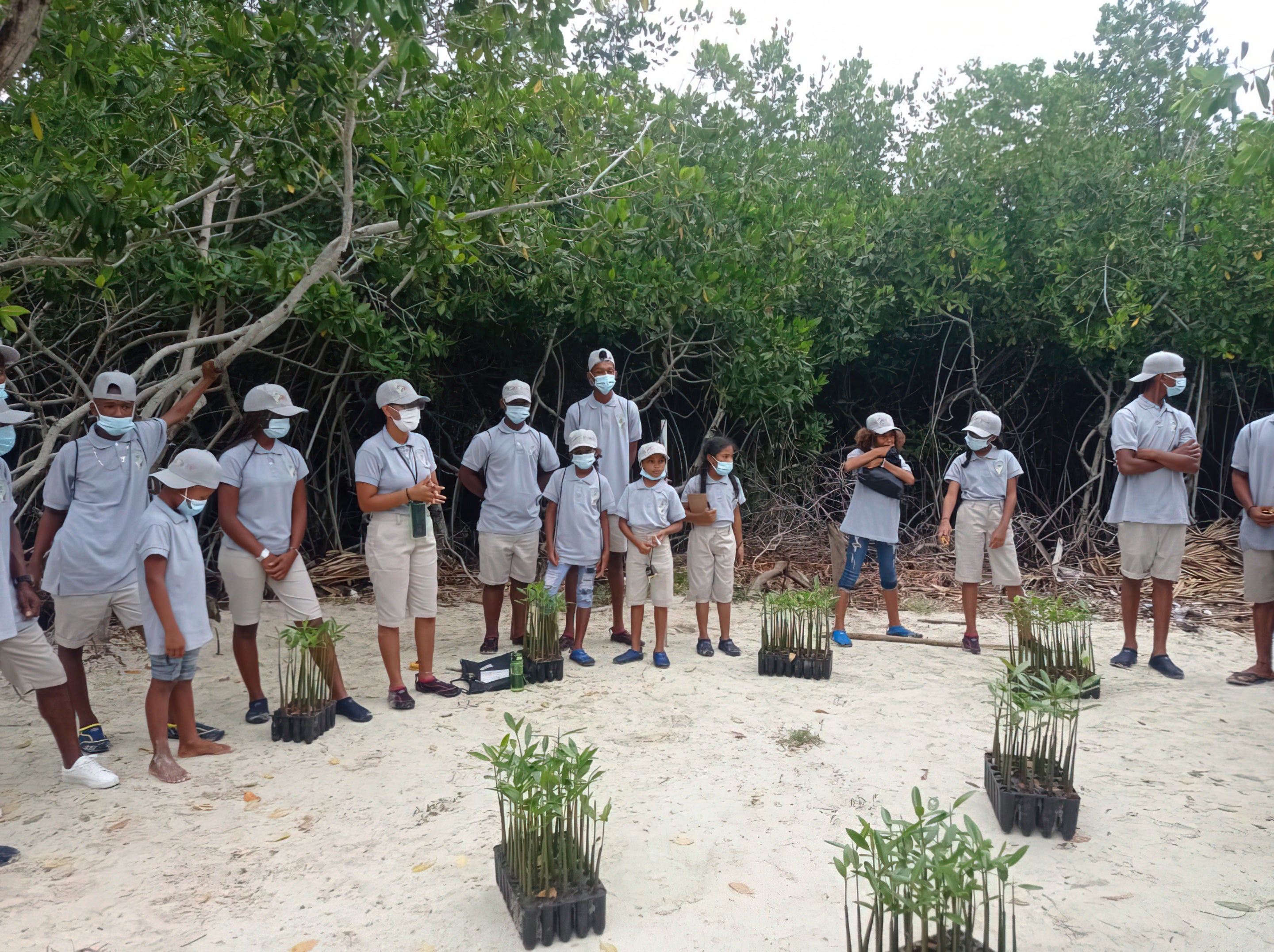
Youth from the Barú community in Colombia replanting mangrove trees. Photo by Community Council of Barú.
Respect Indigenous Knowledge and Indigenous Knowledge-Holders
The IPCC report “recognizes the value of diverse forms of knowledge such as scientific, as well as Indigenous knowledge and local knowledge in understanding and evaluating climate adaptation processes and actions to reduce risks from human-induced climate change.” Indigenous knowledge contains ancient ideas, wisdom, values, and information passed down over time and adapted to evolving conditions. This knowledge, and the languages in which it develops and can be most precisely conveyed, are inseparable from Indigenous Peoples. At the same time, much of this knowledge is essential to broad efforts to address climate change because it contains deep, place-based information, as well as information on changes that have already occurred. Indigenous leaders and communities, along with the knowledge they hold, must be welcomed and uplifted as leaders in the movement to counter climate change. Meanwhile, knowledge, like other valuable materials construed as resources, can also be violently extracted and appropriated, which is why Indigenous Peoples as a whole must be resourced to carry out work based on their knowledge systems, versus any attempts to distill the knowledge and separate it from its source.
Avoid False Solutions
Many efforts are described as attempts to protect the environment and reduce emissions, but many are environmentally destructive, violate Indigenous Peoples’ rights, and prevent Indigenous Peoples from carrying out their own land management and responsibilities to their lands and waters, which maintain equilibrium and keep carbon in the ground. It is important to avoid being distracted by these false solutions.
Hydroelectric dams are an example of an alternative energy source touted as a climate change solution but which have devastating environmental, social, and cultural impacts. They contaminate water, destroy ecosystems and the animals and plants upon which communities depend for food, and a host of interconnected social and ecological consequences. A 2016 study found that the greenhouse gasses emitted by hydroelectric dam reservoirs “contribute significantly to global budgets,” acknowledging that this calculation does not yet account for the climate implications of supplanting complex living ecosystems and the carbon cycling they guarantee with dammed rivers. Some dams, such as those studied in the Amazon, have greater emissions than fossil fuel power plants. Finally, dams are risky: the unpredictability of water levels, which is exacerbated in the changing climate, means that, for all of their destruction, they may not even be able to produce the energy their advocates promise. Indigenous Peoples recognize that these projects are not the solution. Globally, Indigenous Peoples are fighting against dam projects and for their water rights, including the Klamath Tribes in the United States; the Mosetén, Tsiman, Esse Ejja, Leco, Tacana, and Uchupiamona in Bolivia; Inuit and Innu communities in Canada, and others. In defending the lands and waters that contribute to the balance of our global climate, Indigenous leaders risk, and in some cases, lose, their lives for their activism.
Western conservation projects also often occur under the auspices of climate change mitigation, but projects regularly displace Indigenous Peoples and replace Indigenous-stewarded ecosystems with human-free zones that are anything but natural. Time and again, in the U.S. and elsewhere, Indigenous Peoples have been removed from their lands in pursuit of establishing human-free natural parks under the banners of “conservation.” According to Rights and Resources Initiative’s “Rights-Based Conservation” report, which addresses the exclusion of protections for Indigenous Peoples in the Convention on Biological Diversity’s 30x30 proposal, “It [is] estimated that up to 136 million people were displaced in formally protecting half of the Earth’s currently protected area[s].” Cultural Survival Executive Director, Galina Angarova (Buryat), says, “30x30 is really an artificial and arbitrary distinction. For some Indigenous communities the target might be different because of their unique ecosystems. For example, island communities that are surrounded by water require over 80-100 percent of marine protection. Indigenous communities in the Amazon demand 80 percent protection of their terrestrial territories. Secondly, it is a catchy political tool. It sounds nice, but let’s not fall for the semantics. The question is how governments and conservation organizations are going to use this tool and whether Indigenous Peoples' lands and territories are going to be part of the 30X30. If yes, then there is a danger of these lands and territories being used and expropriated in the name of conservation, which will lead to further displacement. Even if we put Free, Prior, and Informed Consent in place, most governments neither truly recognize nor follow FPIC protocols.”
Removing Indigenous Peoples from the lands they have been stewarding for generations is not only ineffective conservation-wise, but it has also “resulted in blatant violation of Indigenous rights and Indigenous genocide.” Most recently, the Tanzanian government disclosed a plan to lease land that has been stewarded by Maasai pastoralists for generations to the Otterlo Business Corporation, a company said to be owned by the United Arab Emirates Royal family, which aims “to create a wildlife corridor for trophy hunting and elite tourism.” This land is under consideration to be a part of the Loliondo Game Controlled Area, “a multipurpose area for hunting, conservation and pastoralism.” Once again, in the name of conservation, at least 70,000 Maasai pastoralists are at risk of being forcefully removed, Maasais who “have developed a symbiotic relationship that has allowed local ecology, domesticated livestock, and people to coexist in a resource-scarce environment.” A Maasai activist who remains anonymous argued, “The myth of protected areas takes away not only our rights as people but our ability to exercise our responsibilities related to land.”
Nature-Based Solutions (NBS) have also been on the forefront of discussions in international climate change forums, such as the 2021 UN Framework Convention on Climate Change (UNFCCC) Conference of Parties (COP26). Although presented as a transversal solution that aims to address ecological as well as societal issues in pursuit of sustainable ecosystem management, the concept fails to require Indigenous Peoples’ Free, Prior and Informed Consent for projects or to center Indigenous leadership and knowledge systems. A Forest Peoples’ Programme report argued that NBS as a solution is controversial given that “its most enthusiastic supporters are large oil companies, governments of wealthy countries with high emissions, and industries responsible for much of the ongoing damage to our planet.” They distract from the work that Indigenous Peoples are doing, which, to achieve what the world needs at a global scale, requires political and financial commitments from member states to resource Indigenous land tenure, rights, and leadership. As the COP26 International Indigenous Peoples’ Forum on Climate Change’s Opening Statement press release says, “Colonialism caused climate change. Our rights and Traditional Knowledge are the solution.”
In the Brazilian Amazon, lands titled to Indigenous communities have been shown to store 36 percent more carbon per hectare than other Amazon forests. Therefore, “titling and protecting Indigenous stewardship of their lands is an urgent climate solution.” Indigenous Peoples have always known, and western studies are finally acknowledging, that ecosystems have evolved with Indigenous Peoples, whose tending and reciprocal relationship has guaranteed the health of those ecosystems. When western conservation removes Indigenous Peoples from their lands or limits their access, it first and foremost violates Indigenous rights, and it also removes the best source of knowledge and practice regarding how to continue maintaining those ecosystems for generations into the future. Indigenous-led conservation work, whether explicitly called “conservation” or not, must be prioritized, and examples abound. The Red Cliff Band of Lake Superior Chippewa established the first Tribal National Park in the U.S. in 2012. The Coastal Guardian Watchmen composed of First Nations members gather data and monitor well being and use of lands, waters, plants, and animals along Canada’s west coast. These undertakings ensure holistic stewardship based on ancient, place-based knowledge benefiting both human and other-than-human members of ecosystems.
Indigenous Peoples Disproportionately Suffer Rights Violations Resulting from Climate Change
Climate change is disrupting and destroying lives on a global scale. Extreme and unpredictable weather, as well as countless other impacts, result in grave threats to people’s safety and their full and effective enjoyment of human rights. Among those who are most severely impacted are Indigenous Peoples, despite the fact that they are among those who contribute least to climate change. This global crisis poses an additional layer of threat to the already existing range of economic, social, and environmental issues that Indigenous Peoples face daily.
Indigenous Peoples' livelihoods are strongly defined by a close relationship to land. Understanding and predicting weather patterns is crucial to guarantee access to adequate food and other resources that their livelihoods have depended upon for generations. Weather unpredictability has severely impacted Indigenous food systems, which poses a grave threat to Indigenous Peoples´enjoyment of the right to adequate food. For example, “Nahua and Binnizá communities in Mexico reported decreases in harvests and miscalculations due to difficulties in predicting weather since changes in the rains mean they may plant too early or too late.” In Russia, Sami and Nenets communities depend on their reindeer herds for food, clothes, transport, and shelter. Their nomadic lifestyle is in danger as a result of the changes that the reindeer migration routes have suffered. Catastrophic wildfires in Siberia in 2019, including belowground peatland fires, were exacerbated by climate change and devastated the homelands of the Evenki Peoples. Evenki activist Nikita Kaplin said that “in three traditional hunting areas alone, between 33 and 90 percent of the forests have been burned.”
Crop failures and an overall loss of biodiversity due to changing weather patterns can be associated with increased poverty and a loss of Indigenous sovereignty over food systems. Some Indigenous people are forced to migrate, as they cannot sustain their traditional livelihoods. Migrating can further exacerbate Indigenous Peoples’ vulnerability and may result in additional exposure to violence and human rights violations.
Top photo: The Ogoni in the Niger Delta region in Nigeria face threats to their livelihood as the quality of their land depletes and the biodiversity of the local ecosystem deteriorates due to oil and gas extraction on their territories. Their farmlands are less fertile and integral plants are becoming extinct, escalating food insecurity. Through a grant from the Keepers of the Earth Fund (KOEF) to the Lokiaka Community Development Centre, volunteers at Lokiaka worked to replenish the land by conducting two intensive training sessions with Ogoni women. Workshops taught 65 women farmers the skills to start mangrove and fruit tree nurseries and trained 55 women to make fuel-efficient stoves out of clay. Photo by Lokiaka Community Development Centre.
